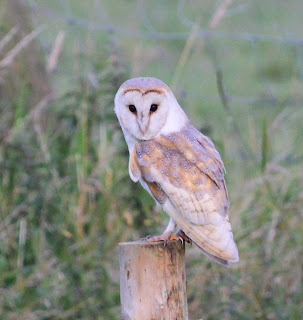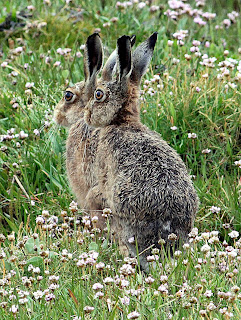The rain batted down against the bedroom window once more this morning. Add to this the seemingly ever present gusts from the west and it seemed a good time to postpone checking Barn Swallow nests until tomorrow but instead delve into a book recently received for review by Another Bird Blog.

Readers from North America especially those that bird on the East Coast, will be pleased to hear that the book is the awaited “The Birds of New Jersey – Status and Distribution” by William J Boyle Jr, a birder of 40+ years and author of "A Guide to Bird Finding in New Jersey".
Of course I know where New Jersey is and I recognise it includes the birding sites of Sandy Hook and Turkey Point and the celebrated migration hot-spot of Cape May, where both US and UK birders/banders make pilgrimages. But until I looked in “Wiki” I didn’t realise the state of New Jersey in only about 70 miles wide and 170 miles from top to bottom; all the more reason to rejoice in the 450 + species recorded here in such a relatively small state. A major reason for the huge number and variety of species here is that as far as a bird is concerned New Jersey has a wide variety of habitats in a geographically ideal location whether they reside permanently, seasonally, or just make stop-over visits during migration time.
So this book is not simply another field guide to add to the many already out there, it is firstly a guide to the status and distribution of the more than 450 bird species recorded in the state of New Jersey in the last 200 years. Until now there has been no single, comprehensive and readily available guide out there for birders and naturalists, so as well as the 200 year history, this book draws from the many publications and bird journals of more recent years. Naturally enough in this the age of the Internet, Boyle’s book includes records from online reporting services like eBird, New Jersey Rare Bird Alert and the Cape May Birding Hotline, so it is bang up to date.
I am hugely impressed by this book. It is very well written, clear and concise, nicely laid out and thorough in presentation. By the time I had studied it well I realised that it was as the back cover blurb had claimed, “authoritative”. The 300 pages contain species accounts that describe the preferred habitat and relative abundance of each species as well as detailed, colour coded and very precise maps, interspersed with some really excellent and varied photographs that break the text into readable chunks. Shame about a distant and blurred but the actual Northern Lapwing photograph, the second ever record of Vanellus vanellus in New Jersey, and if only William had asked I would have emailed him a few pics of Lapwings from Pilling!


I found the terminology used for Status and Distribution especially effective and useful, with a couple of extra terms I had not seen before in this type of book. Those two are “Irregular” - species whose occurrence is unpredictable, and “Local” - typically found only in specific habitats and areas within a particular region. If only field guides could include such fine detail it would surely help birders unfamiliar with a particular place to find birds, or indeed help new birders to sort out the likelihood of the bird’s occurrence in the first place? This led me to think that anyone who birds regularly in New Jersey or neighbouring states should not only study this book in depth but also keep it side by side with their standard field guide to Eastern North America.

The final 13 pages of the book contain a helpful and extensive bibliography for readers interested in pursuing and learning more about the birds and natural history of New Jersey.
To sum up, “The Birds of New Jersey” is an object lesson in how to produce a book of this type. It is well researched, succinct but detailed, easily accessible and extremely logical in the arrangement of the information. The book also lives up to the quality of print, colour and paper that we expect of a Princeton product.
Finally, another few facts about New Jersey: Its per-capita income is the third highest in the United States and New Jersey also has the highest percentage of millionaire households. So there are a few people who don’t have to worry about the cost of this splendid book, not that anyone should at the bargain price of $24.95 or £16.95 from Princeton University Press.







































.jpg)











.jpg)












